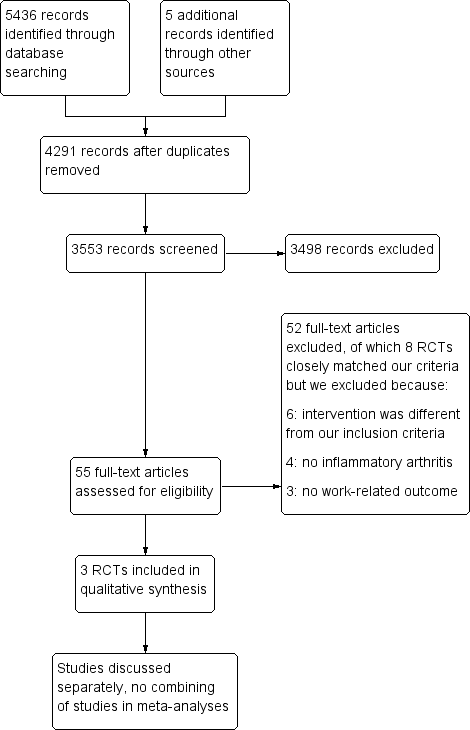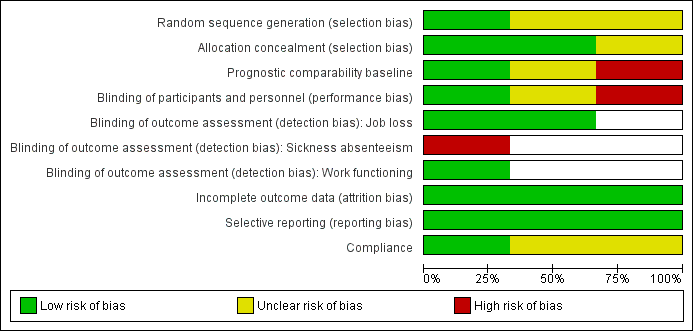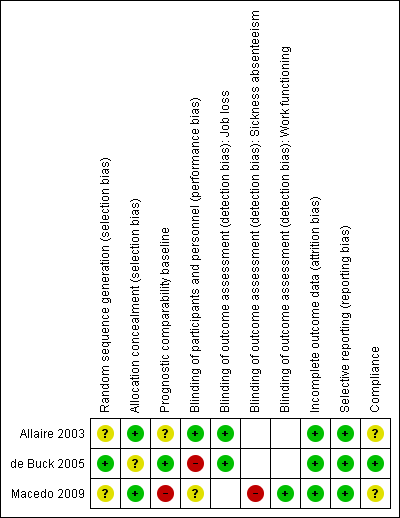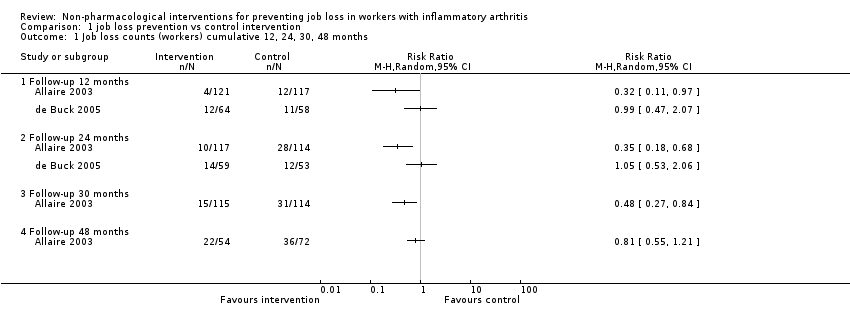Contenido relacionado
Revisiones y protocolos relacionados
Rachel Robinson, Emmanuel Okpo, Nomusa Mngoma | 29 mayo 2015
Yvonne B Suijkerbuijk, Frederieke G Schaafsma, Joost C van Mechelen, Anneli Ojajärvi, Marc Corbière, Johannes R Anema | 12 septiembre 2017
Marja Hult, Kirsi Lappalainen, Terhi K Saaranen, Kimmo Räsänen, Christophe Vanroelen, Alex Burdorf | 8 enero 2020
Tracy E Slanger, J. Valérie Gross, Andreas Pinger, Peter Morfeld, Miriam Bellinger, Anna‐Lena Duhme, Rosalinde Amancay Reichardt Ortega, Giovanni Costa, Tim R Driscoll, Russell G Foster, Lin Fritschi, Mikael Sallinen, Juha Liira, Thomas C Erren | 23 agosto 2016
Anootnara Talkul Kuster, Therese K Dalsbø, Bao Yen Luong Thanh, Arnav Agarwal, Quentin V Durand‐Moreau, Ingvild Kirkehei | 30 agosto 2017
Patricia A Gillen, Marlene Sinclair, W George Kernohan, Cecily M Begley, Ans G Luyben | 30 enero 2017
Frederieke G Schaafsma, Norashikin Mahmud, Michiel F Reneman, Jean‐Baptiste Fassier, Franciscus HW Jungbauer | 12 enero 2016
Sofia Ramiro, Helga Radner, Désirée van der Heijde, Astrid van Tubergen, Rachelle Buchbinder, Daniel Aletaha, Robert BM Landewé | 5 octubre 2011
Brian E van Wyk, Victoria Pillay‐Van Wyk | 16 abril 2014
Myrthe van Vilsteren, Sandra H van Oostrom, Henrica CW de Vet, Renée‐Louise Franche, Cécile RL Boot, Johannes R Anema | 5 octubre 2015










